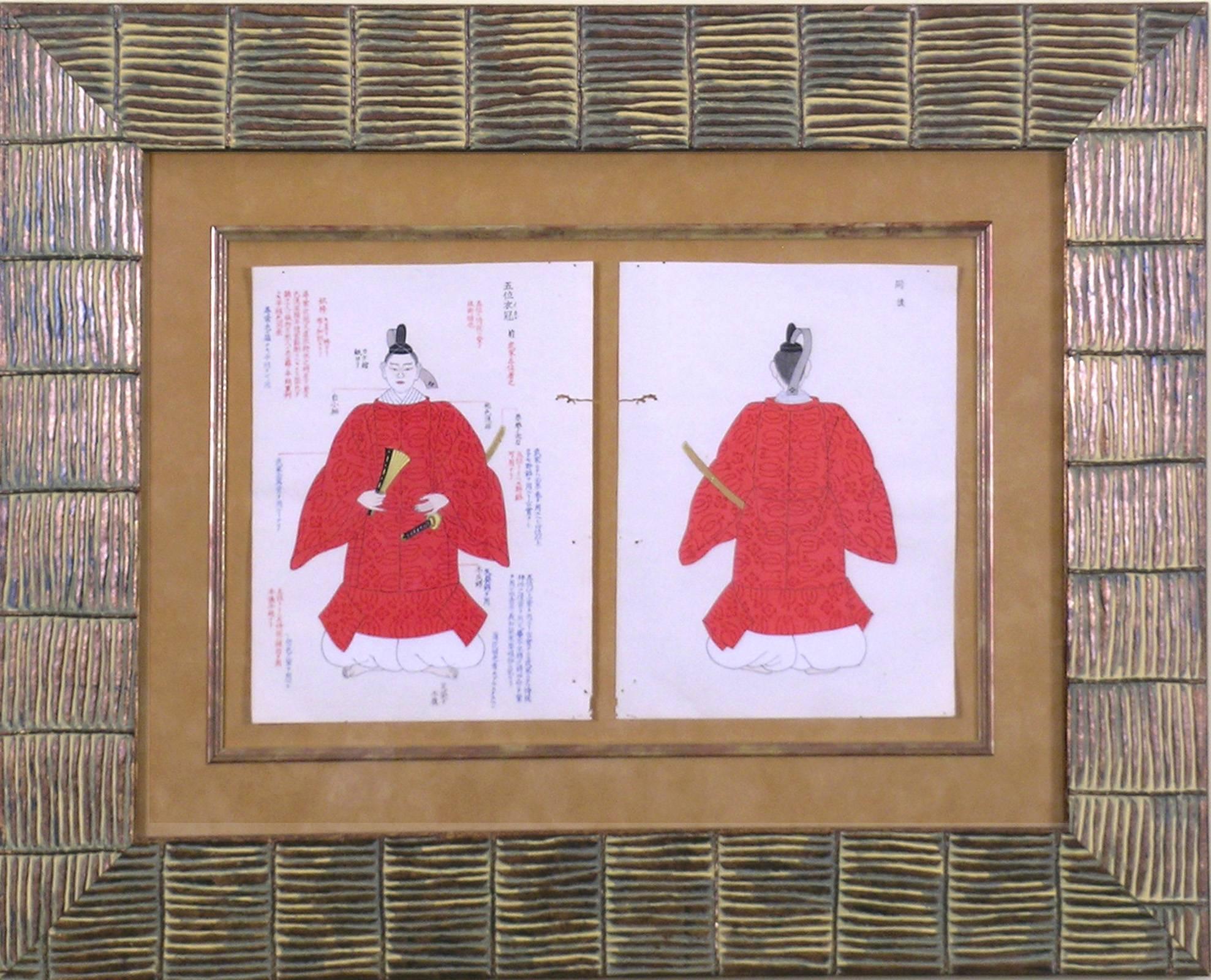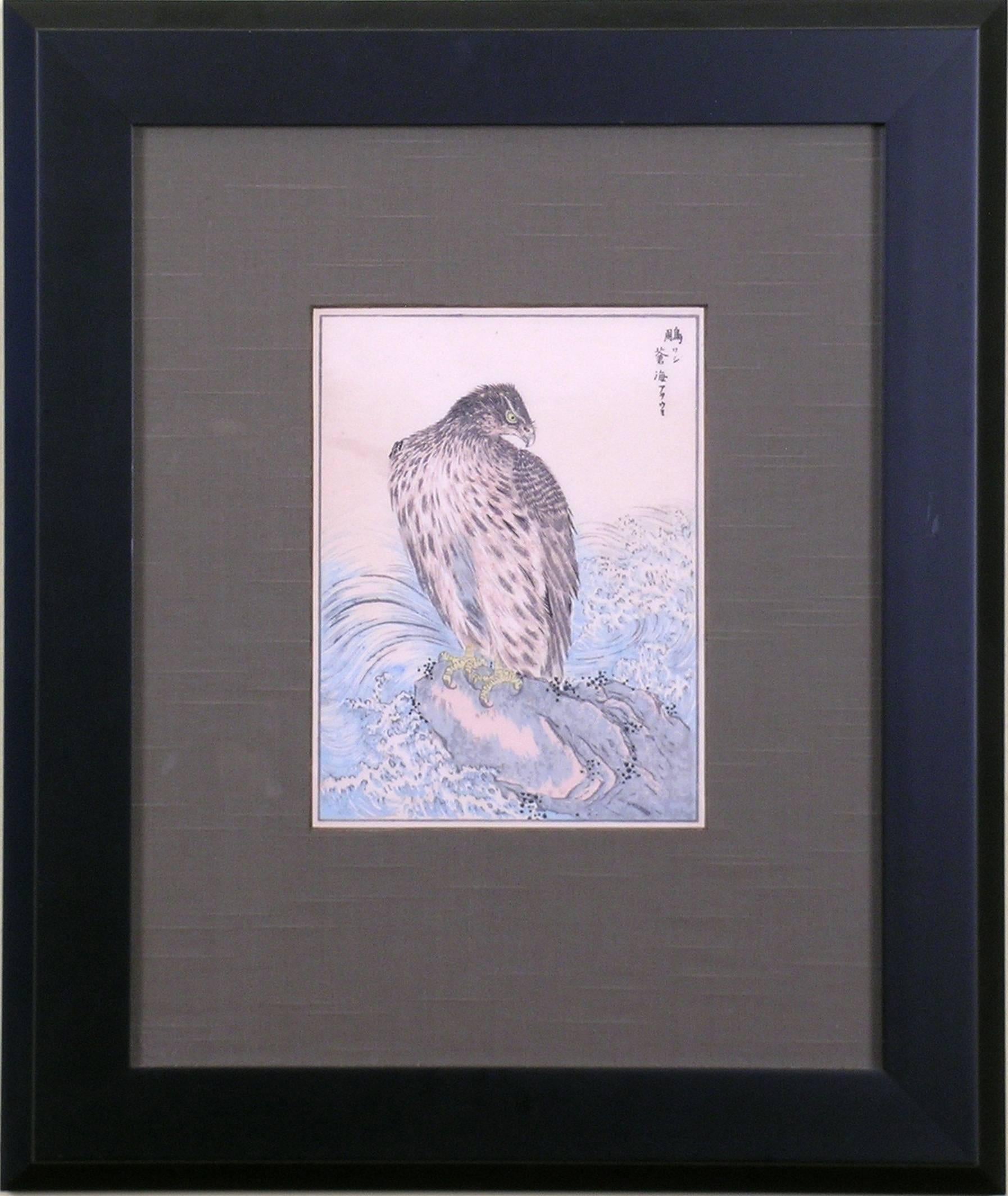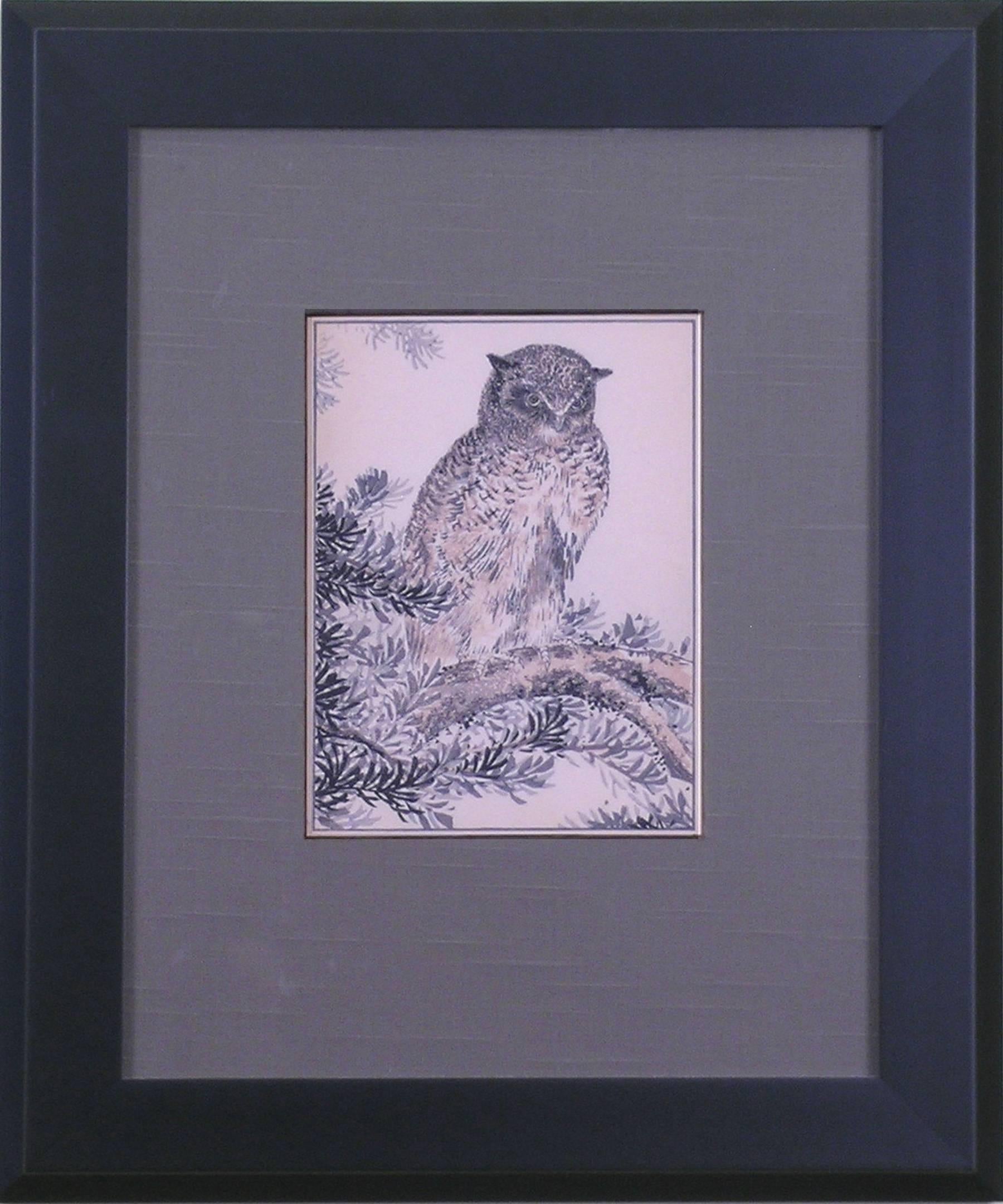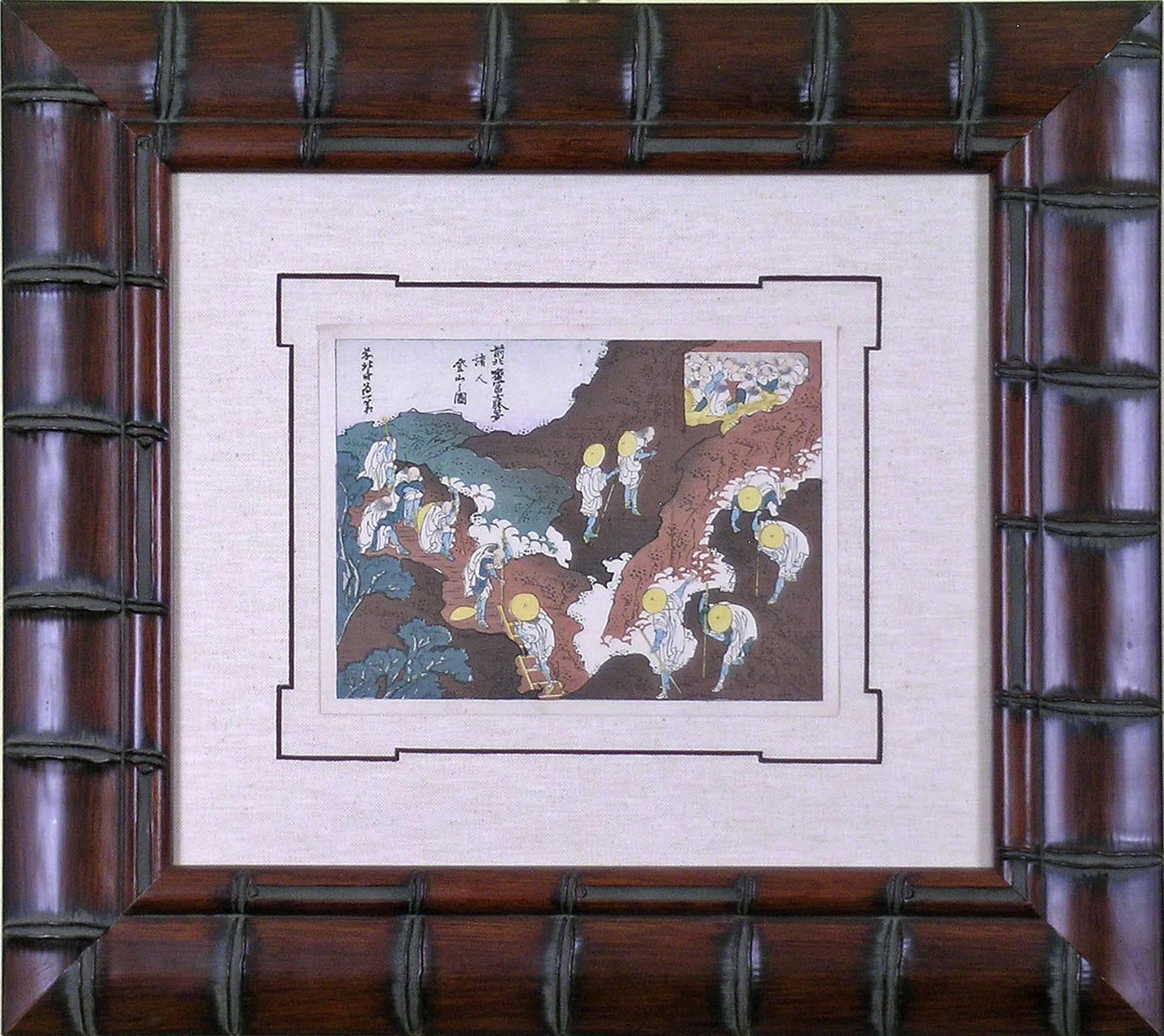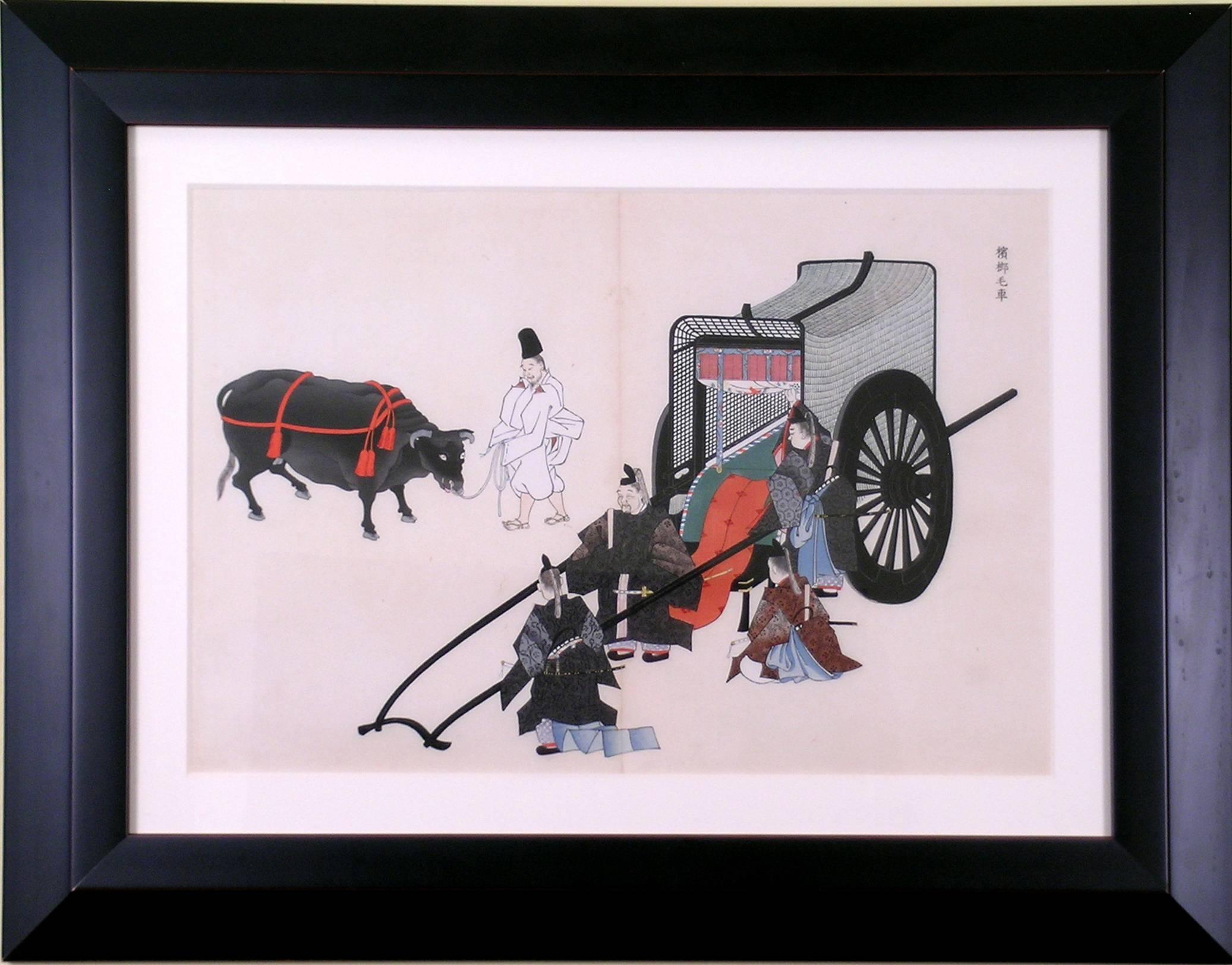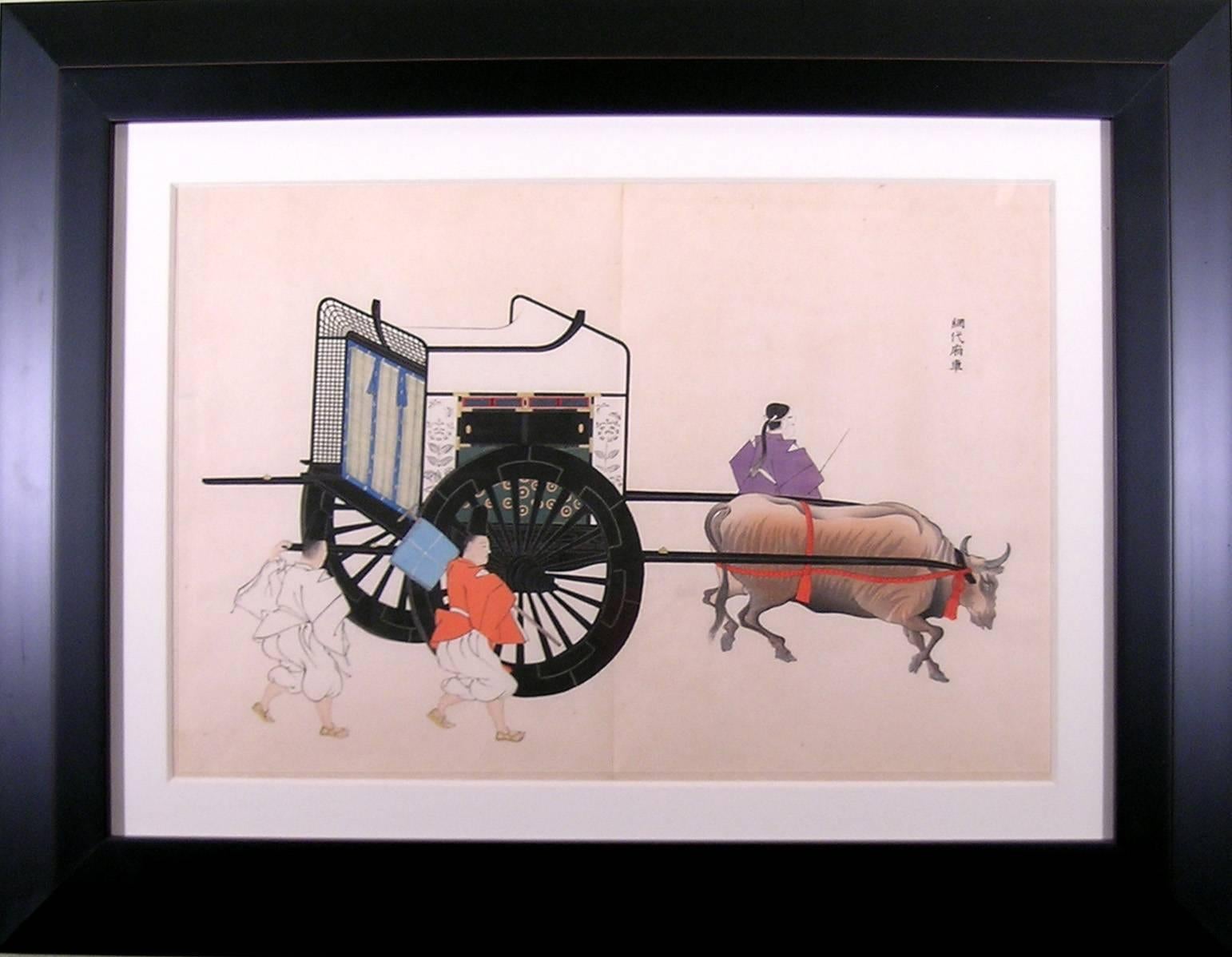Want more images or videos?
Request additional images or videos from the seller
1 of 6
Katsushika HokusaiConstruction #21834-35
1834-35
About the Item
FUGAKU HYAKKEI
(Views of Mt. Fuji)
Katsushika Hokusai (1760-1849)
Woodblock Print
1834-5 Edo period
It signifies the long history and the aspirations of the race; it is a token of all the scenic beauty of the land, and, by inference, represents the impressionability of all the people to the beauties of nature. -B. Hillier
It has often been felt that Hokusai had a spiritual ideal of the mountain. To him Mount Fuji would come to represent a powerful reservoir of immortality that would assist him in his personal quest to live beyond one hundred years of age and fathom ultimate artistic truths. So entranced by the mountains majesty, Hokusai chose the pseudonym ‘Manji’ which was written with a character symbolizing long-life and could also be read as ‘One hundred times one hundred”. This was a fitting signature for the work which he felt would grant him a life that spanned a century.
This manifesto, signed ‘Manji’, accompanied Hokusai’s famous work:
From the age of six, I had a penchant for copying the form of things, and from about fifty, my pictures were frequently published; but until the age of seventy, nothing that I drew was worthy of notice. At seventy-three years, I was somewhat able to fathom the growth of plants and trees, and the structure of birds, animals, insects and fish. Thus when I reach eighty years, I hope to have made increasing progress, and at ninety to see further into the underlying principles of things, so that at one hundred years I will have achieved a divine state in my art, and at one hundred and ten, every dot and every stroke will be as though alive. Those of you who live long enough, bear witness that these words of mine prove not false.
Hokusai was seventy when he commenced working on the illustrations of Mount Fuji. He generously included many aspects of life in it. Most were to celebrate the industrious nature of his people and their reverence for nature’s wonders. With settings from land and sea, the revered mountain always is within view. Over the next several years, he would publish well over one-hundred views of the mountain. He died in his 90th year.
Reference: Henry D. Smith II. Hokusai: One Hundred Views of Mount Fuji. Thames & Hudson. London, 1988.
- Creator:Katsushika Hokusai (Japanese)
- Creation Year:1834-35
- Dimensions:Height: 16.75 in (42.55 cm)Width: 19.25 in (48.9 cm)
- Medium:
- Movement & Style:
- Period:
- Condition:Excellent. Framed to museum specifications using archival matting, backing, hinging. Hand-cut decorative mat opening. Hand-painted decorative mat opening. Glazed with ultra-violet filtering Plexiglas.
- Gallery Location:Florham Park, NJ
- Reference Number:
About the Seller
5.0
Vetted Seller
These experienced sellers undergo a comprehensive evaluation by our team of in-house experts.
1stDibs seller since 2014
161 sales on 1stDibs
Typical response time: 2 hours
- ShippingRetrieving quote...Ships From: Florham Park, NJ
- Return PolicyA return for this item may be initiated within 1 day of delivery.
More From This SellerView All
- Red Men's Kimono DesignBy Matsui YuokuLocated in Florham Park, NJREISHIN GACHO (Album of Beautiful Designs) Japanese Kimono Designs Matsui Yuoku, Painter Japan, 1900 (Meiji 33) Honda Ichijirou, Publisher Woodblock P...Category
Early 1900s Academic Prints and Multiples
MaterialsWoodcut, Watercolor
- HawkBy Kono BaireiLocated in Florham Park, NJKono Bairei (1844 – 1895) Kacho-ga. (Birds and Flowers) Japan, c1880 Woodblock Print. 15 x 11. Okura Magobei, Publisher. The enthusiasm for nature prints transcends the centuries. “One Hundred Flowers” is a mid-nineteenth century work illustrating varieties of flowers in naturalistic styles. Traditional woodblock printing enhances the beauty of each work. The artist must carve different woodblocks for every color he wishes to transfer to paper. In this style of printing it is imperative that the register of each woodblock be exact as they must match perfectly to create an image without blurring. In addition to his illustrated flower books...Category
Late 19th Century Academic Prints and Multiples
MaterialsWoodcut, Watercolor
- OwlBy Kono BaireiLocated in Florham Park, NJKono Bairei (1844 – 1895) Kacho-ga. (Birds and Flowers) Japan, c1880 Woodblock Print. Okura Magobei, Publisher. The enthusiasm for nature prints transcends the centuries. “One Hundred Flowers” is a mid-nineteenth century work illustrating varieties of flowers in naturalistic styles. Traditional woodblock printing enhances the beauty of each work. The artist must carve different woodblocks for every color he wishes to transfer to paper. In this style of printing it is imperative that the register of each woodblock be exact as they must match perfectly to create an image without blurring. In addition to his illustrated flower books...Category
Late 19th Century Academic Prints and Multiples
MaterialsWoodcut, Watercolor
- Men on the MountainBy Katsushika HokusaiLocated in Florham Park, NJFUGAKU HYAKKEI Views of Mt. Fuji Katsushika Hokusai (1760-1849) Woodblock Print 1834-5 Edo period It signifies the long history and the aspirations of the race; it is a token ...Category
Mid-19th Century Academic Prints and Multiples
MaterialsWoodcut, Watercolor
- Oxcart with 5 Men and 1 OxBy Yosha Zuko FuzuLocated in Florham Park, NJYosha Zuko Fuzu Meiji 33 (1900) Woodblock with Original Hand-Coloring Writer: Kosugi Onson, Imaizumi Teisuke Publisher: Yoshikawa Hanshichi The Japanese litters and palanquins...Category
Early 1900s Academic Figurative Prints
MaterialsWoodcut, Watercolor
- Oxcart with 3 MenBy Yosha Zuko FuzuLocated in Florham Park, NJYosha Zuko Fuzu Meiji 33 (1900) Woodblock with Original Hand-Coloring Writer: Kosugi Onson, Imaizumi Teisuke Publisher: Yoshikawa Hanshichi The Japanese litters and palanquins...Category
Early 1900s Academic Figurative Prints
MaterialsWoodcut, Watercolor
You May Also Like
- Louis I of France as a Roman Emperor, in profile to the rightBy Christoffel JegherLocated in Fairlawn, OHLouis I of France as a Roman Emperor, in profile to the right Chiaroscuro woodcut, 1631-1633 Unsigned (as usual) After a drawing by Hubert Goltzius (1526-1583)...Category
17th Century Academic Portrait Prints
MaterialsWoodcut, ABS
- Greek Architecture Blueprint of Ancient Amphitheatre Cyanotype Print, WatercolorBy Kind of CyanLocated in Barcelona, ESThis is an exclusive handprinted limited edition cyanotype. Details: + Title: Ancient Roman Amphitheater + Year: 2022 + Edition Size: 50 + Stamped and Certificate of Authenticity provided + Measurements : 70x100 cm (28x 40 in.), a standard frame size + All cyanotype prints...Category
2010s Academic Still-life Photography
MaterialsPhotographic Film, Woodcut, Emulsion, Watercolor, C Print, Color, Lithog...
- Giorgio De Chirico ( 1888 – 1978 ) – Autoritratto – hand-signed lithograph –1970By Giorgio De ChiricoLocated in Varese, ITOriginal color lithograph , edited in 1970 limited edition signed in pencil in lower right corner and numbered as: 72/110 paper size: 70 x 53,5 cm framed size: 93,5 x 77 cm ( origina...Category
1970s Academic Prints and Multiples
MaterialsLithograph, Paper
- Tetbury Church - Signed Lithograph, Royal Art, Royal Heritage, Cotswolds, BritishLocated in Knowle Lane, CranleighTetbury Church by His Majesty King Charles III - Hand Signed Limited Edition Lithograph. Belgravia Gallery has been honoured to be associated with ...Category
1990s Academic Landscape Prints
MaterialsLithograph
- Overlooking Wadi, Saudi Arabia - Signed Lithograph, Royal Art, Mountains, AsirLocated in Knowle Lane, CranleighOverlooking Wadi, Asir Province, Kingdom Of Saudi Arabia by His Majesty King Charles III, (created when he was HRH The Prince of Wales) - ...Category
Early 2000s Academic Landscape Prints
MaterialsLithograph
- Windsor Castle - Signed Lithograph, Royal Art, Royal Homes, Windsor Castle, BritishLocated in Knowle Lane, CranleighWindsor Castle by HM King Charles III - Hand Signed Limited Edition Lithograph. Belgravia Gallery has been honoured to be associated with the artwo...Category
1990s Academic Landscape Prints
MaterialsLithograph
Recently Viewed
View AllMore Ways To Browse
Antique Construction
2 Antique Pictures
Woodblock Print Of A Beauty
Mounted Insects
Insect Mount
Antique Insect Print
Hokusai Woodblock Prints
Antique Sea Life Prints
Hokusai Katsushika
Hokusai Fuji
Drewes Woodblocks
Mountain Poster
Character Poster
Georges Pompidou
Andy Warhol Keith
Retro War Posters Art Posters
Statue Print
Poster Festival
